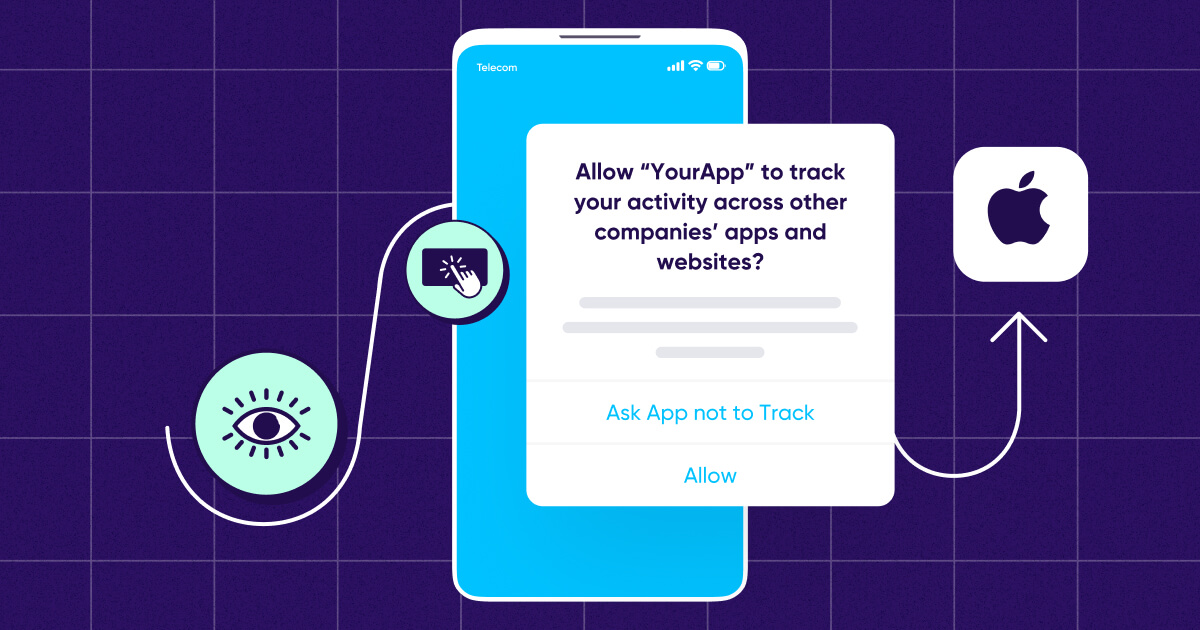
21 app marketing strategies to charge up user acquisition and retention
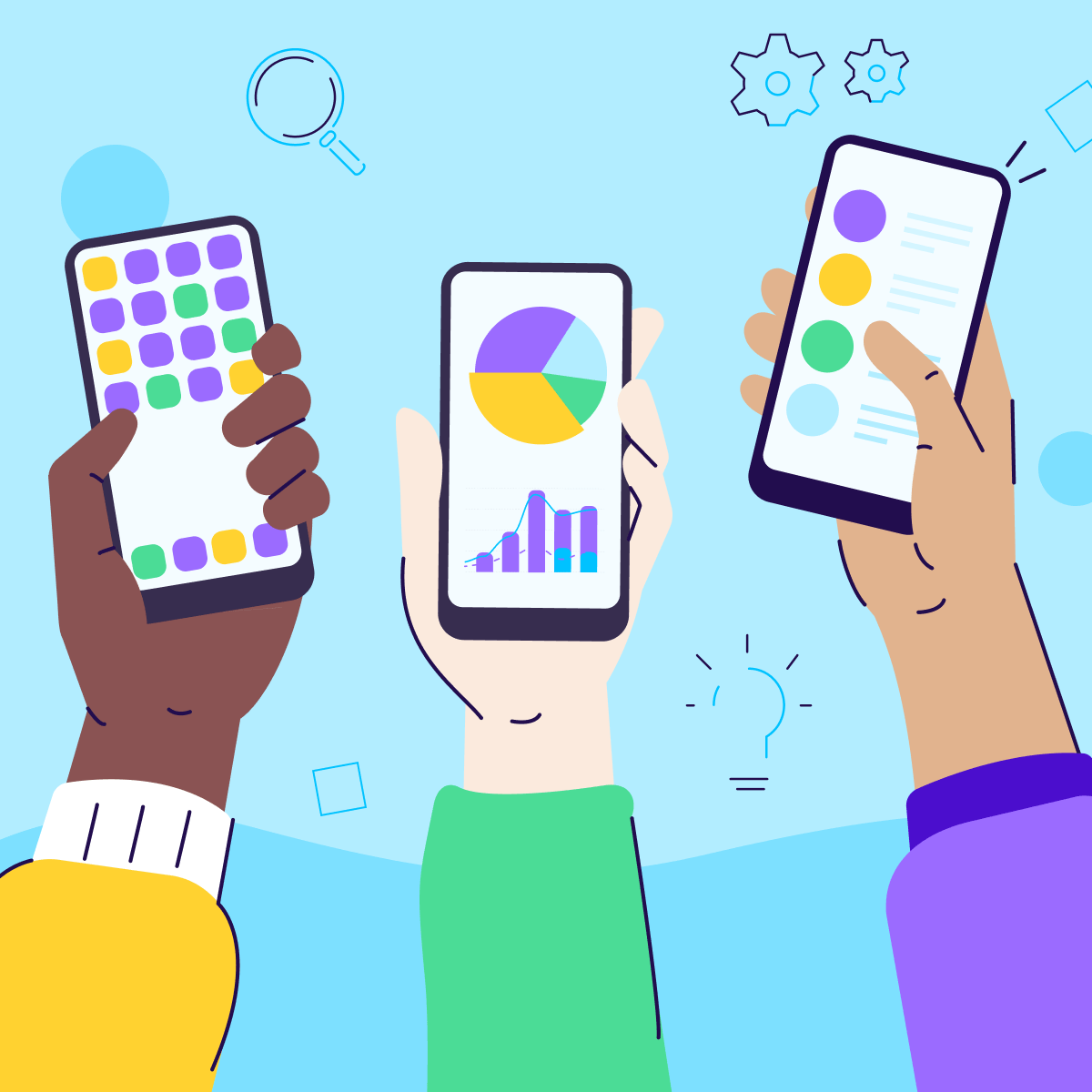
You’re psyched.
You’ve just built the next Candy Crush, and you can sense the possibilities.
We’re talking Wired coverage. We’re talking a company profile in the New York Times. A tell-all interview with Oprah could even be on the table. Angry Birds has nothing on you, and even Instagram could be small potatoes if you play your cards right.
There’s just one small barrier between you and world app domination — a tiny detail, really:
No one knows about your app. Yet.
No worries, we’ve got you covered. Here’s your complete list of the app marketing strategies you need to get noticed, maximize downloads, and retain users like a champ.
App marketing strategies explained
Google Play and Apple’s App Store together house nearly six million different apps. With that kind of competition, you need a solid strategy to stand out from the crowd.
Unfortunately, the Field of Dreams approach doesn’t work in the mobile app industry: you can build it, but they may not come. And if they don’t come, you’ve just wasted all that time and money building a killer app that no one will use.
That means you need to show up with your best app marketing game.
Before we start, let’s just clarify that app marketing is the implementation of marketing strategies to promote applications (apps) on mobile devices. It’s critical to help you get the exposure you need to be successful. Invest some time, money, and effort into the right app marketing strategies, and you’ll set yourself up for the success your app deserves.
App marketing is a massive discipline, and there are countless approaches you can take. We like to think in terms of strategies aimed at the different stages of the customer lifecycle, sometimes called an engagement loop:
- Awareness: In this stage, your users become aware that your app exists. The goal of marketing here is to create opportunities for discovering your app.
- Acquisition: In this stage, your users decide whether to download your app. The goal of marketing strategies aimed at acquisition is to maximize downloads and conversions.
- Retention: In this stage, your users decide whether to use — or continue to use — your app. Your goal here is to create ongoing engagement and loyal users that don’t churn.
The overall goal for an app marketer is to draw users through each stage, from awareness to retention. Below, we’ve pulled together a comprehensive list of tactics and marketing campaign ideas for each part of the engagement loop: it’s your one-stop app marketing guide.
But first, for any marketing strategy to be effective, you need to do your homework.
The pre-launch prerequisites for any marketing strategy
- Develop your brand and voice: This foundation will direct and inform the rest of your marketing activities.
- Create user personas: App buyer personas help you understand who your ideal customer is so that you can sharpen your messages for that audience.
- Choose your strategies wisely: If you’re building a game for young people, Tik Tok might be an appropriate channel. If you’re building a B2B feature request tracking tool, it would be wildly inappropriate. Select your channel and tactics based on your chosen audience.
- Test, test, test: It’s the rare marketing team that perfects its message and presentation right away. Instead, we recommend A/B testing, collecting data, and seeing what works.
Now you’ve got solid foundations in place, let’s jump into the tools and tactics you can use for all three stages of the engagement loop.
Awareness stage
The first step to getting popular is getting noticed. Here are the top strategies you can employ to create a buzz around your app and build interest.
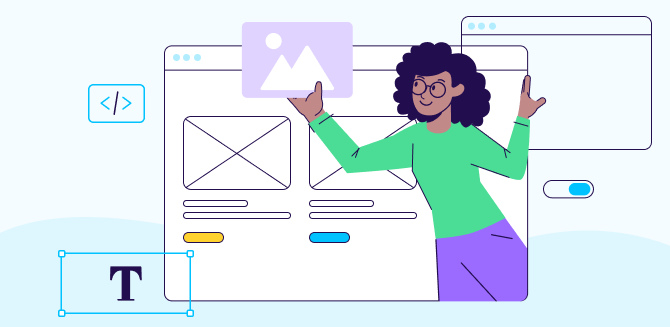
1. Create a website or landing page
Websites create credibility and support your social media efforts. They can also house any content (see below) you create as part of your marketing or SEO campaigns, such as how-to articles that help your users make the most out of your app.
A web page may not be so important for some apps, for example if you’re building a Wordle competitor. But it’s critical for others. For example, any B2B SaaS app would need a webpage.
2. Launch events
Events can help put a new app into the spotlight. You might organize a glitzy Apple-style showcase, or piggyback on an existing forum like a mobile app conference or even a Comicon event.
Tip: Events can be costly and time-consuming to organize. Make sure you carefully target the event to make sure it’s worth the investment.
3. Social media
There were 1.21 billion global monthly active Instagram users in 2021, and Facebook has more than double that with 2.9 billion monthly active users. Even Pinterest has 445 million. If you’re looking for an audience, social media can help you find it.
However, social media marketing is more resource-intensive than many people realize. It’s often better to choose one or two platforms and do them well than to try to do them all.
4. Content marketing and SEO
Content marketing is an approach to marketing that emphasizes creating, publishing, and distributing content for your ideal audience. The idea is that people will find your website and app through genuinely useful content. Popular forms of content creation include blogs, podcasts, YouTube videos, eBooks, and webinars.
If you plan on investing in content, carefully consider search engine optimization. You want to be thoughtful about the content you create and how you create it,so your target audience can find it on search engines like Google, Bing, and YouTube. When done well, SEO can generate a steady stream of organic (free) traffic to your website.
Tip: An effective content marketing strategy raises awareness while also boosting acquisitions and retention.
5. App store optimization (ASO)
Search is one of the most common ways users find apps. ASO is essentially the same as SEO, just aimed at two particular search engines: the App Store and Google Play. To get found, you need to use relevant keywords that your users might use to look for your app.
There’s a lot to know about app store optimization — check out our complete guide to ASO for all our tips and tricks.
6. Guest posting
Guest posting is a slight twist on the content marketing strategy above. The idea is to write or produce content and then ask other websites, usually more popular ones, to publish it.
It’s a win-win. They get free, high-quality content published on their sites, and you get exposure (and backlinks — links to your website from another one — which are useful for SEO).
Tip: It can be challenging to get backlinks because many websites are hesitant to publish marketing materials for others. To be successful, create top-quality content and start by reaching out to your existing network. You can outsource this by hiring a PR agency.
7. Engage influencers

Influencer outreach can be an effective add-on to your social media or content strategy. It’s actually critical in some industries, like gaming.
When it comes to social media, influencers can help you obtain more followers and exposure. And with a content strategy, influencers can post your content and help you obtain valuable backlinks.
Just make sure you choose your influencers wisely. You’re looking for those who share authentic content relevant to your industry. Audience size matters, but so does quality — even micro-influencers with a small but engaged audience can be invaluable.
8. Paid advertisements
Paid ads are a solid strategy for any app. The upside is that they can generate a relatively stable stream of traffic. The downside is that they cost money, so you must set aside some budget. You can also be flexible with where you put your ads—in search engines, on social media, or even in the app store.
Tip: Writing ads that convert requires skill. Do some research on best practices before you dive into it, or hire an expert copywriter.
9. Apply for awards
Several publications and organizations present awards to apps for various criteria, like being well-designed, fast-growing, or innovative. These awards come with significant exposure (and calling your app “award-winning” is a nice bonus for your credibility).
Do a quick Google search for a list of awards that are relevant to you and start applying. You can’t win if you don’t apply! Many companies don’t apply for awards, so your odds of winning may be better than you think.
10. Pitch to editors in app stores
The App Store and Google Play both highlight new, innovative, or useful apps. To get selected by an editor and featured, you just need to pitch your app and why it’s useful.
They look for apps with great user interface that are unique, accessible, and offer excellent user experience. Pitching is easy — just get in touch with the App Store or Google Play directly.
Acquisition stage
By now, your potential user knows about your app and is considering using it. But you need them to convert — to hit the download button. Here are the most effective strategies.
1. Write a killer description
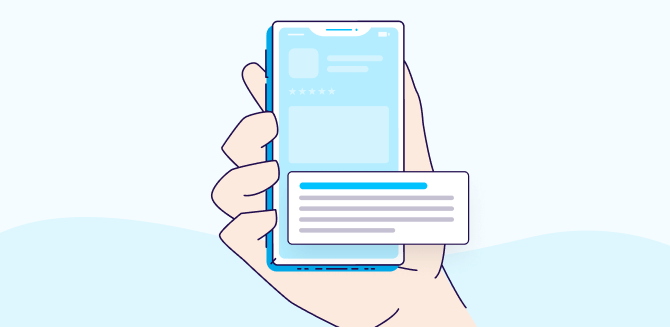
Your app description is one of the most vital pieces of content. Effective descriptions highlight not only your app’s features but also its user benefits. It will be persuasive and yield conversions.
The best descriptions are conversational and clear while powerfully communicating the app’s value.
Tip: App descriptions also matter for ASO, so make sure it’s keyword rich (but not over-stuffed).
2. Free trial
The days of paying for an app without trying it are long gone. The truth is that most people want to kick the tires of your software before they commit to paying for it.
A free trial option is critical. Free trials are a valuable source of customer information, too — you can use them to understand what your users are trying to do with your software and the barriers they face to getting there.
Tip: Onboarding is critical to converting free trials to paid customers. Look for ways to help your customers get to that “Aha!” moment where they can clearly see your app’s value. Also, avoid asking for credit cards upfront — it turns people off from trying your product.
3. Email marketing
Email is one of the most effective forms of marketing because it’s direct — your marketing message goes right to your customer’s inbox. It’s especially effective at nurturing customers and demonstrating your app’s usefulness.
The challenge with email marketing is building your subscriber list, but a content marketing strategy can help. For example, create a helpful eBook related to your product, then offer it to your users for free in exchange for their email addresses. Voilà: you have an email list.
4. Create viral loops
A viral loop is a technique that relies on creating something that your users want to share with their friends. Then, the friends want to share it with their friends, and so on. For example, you could offer users a monetary reward or a discount when their friends download your app. When done well, this can result in a snowball effect where more and more people download your app.
Tip: Make the reward relevant to your app. For example, if your app stores photos, you could offer more photo storage capacity to your users when they share your app with their friends.
5. Develop social proof
Social proof comes from other users and speaks to your app’s quality. Testimonials are a form of social proof, as are online reviews. The idea is that potential users evaluate whether they’ll like your app based on what others think about it — if others like it, it must be good.
There are many ways to use social proof, from publishing expert reviews to noting the number of people you have on your mailing list and including the logos of companies that use your app. Even the influencer strategy mentioned earlier is a kind of social proof.
Tip: A variety of social proof is best. Include different kinds of social proof throughout your site and app description.
6. Offer promotional pricing
People love a deal. Sales aren’t sexy, but they work. If you’re looking to effectively compete and boost your conversions, offer discounted pricing.
To supercharge this strategy, use advanced analytics to offer discounts to customers who don’t convert immediately after your free trial, or to those with behavioral indicators that suggest they’re price sensitive.
Retention stage
Acquisition is a necessary part of any app marketing strategy, but it’s not enough on its own. Retention — keeping those customers around — is just as critical. Here’s how you can use marketing to retain customers.
1. Develop a killer onboarding strategy
Customers won’t pay for apps that they can’t use. Your onboarding flow is what helps your customer understand how to use your app and get value out of it.
There’s no one-size-fits-all onboarding strategy — it depends entirely on your app. A well-designed welcome email sequence showing how to use the product could be effective for some apps. For others, you might need a set of detailed blogs that help readers get the most out of the tool. Other apps might require a series of arrows and checklists that help players understand how to use a gaming interface.
Whatever onboarding flow your team builds, make sure you test it to ensure it’s working. If you see a low trial-to-paid conversion rate, consider digging into your onboarding experience to understand why that’s happening.
Tip: Depending on your company, marketers may have more or less input into onboarding. Regardless of who is responsible for building the flow, marketers can help make sure it’s working.
2. Track customer feedback and feature requests
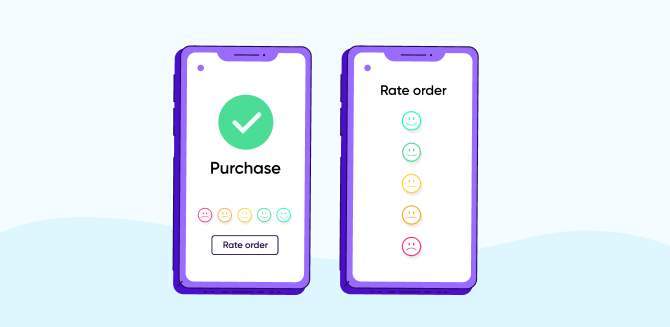
One of the biggest reasons for churn is feature gaps — your app doesn’t have the features your users want or need. Give your users a way to provide you with product feedback and feature requests. Then develop a solid system to collect that feedback and prioritize it so that you spend your development resources building the highest-impact features.
Tip: Consider collecting in-app feedback. Also, connect your customer-facing teams (customer success, support, sales, marketing, and so on) with your product teams so that product managers understand what your users want.
3. Close the loop
When you build features that a customer asks for, tell them. We call this closing the customer feedback loop. It’s brilliant because it’s easy to do, but it offers massive rewards: customers can see that you’re not only listening to them but actually acting on their feedback.
It also helps them see that even if you don’t have all the features they want in your app now, you’re committed to continual improvement. Closing the loop is a terrific way to develop customer loyalty and enhance retention.
4. Mitigate churn risk
Churn — users leaving — is often predictable. If you collect the right data, you can often identify behavior data that indicates when people may be more likely to churn. That’s useful because it helps you take action before it’s too late.
For example, if you know that users are more likely to cancel after they haven’t used your app for a week, you can send a trigger push notification to nudge them back to your app after six days of absence.
5. Subscription cancellation deals
You can often stop a subscription cancellation with a well-timed intervention. For example, as people are canceling, you can ask them why. Then you can offer different ways to solve that problem — either get in touch with support or help them find a feature they’re looking for. You can even offer them an exclusive discount or deal to keep them at a slightly lower price.
Tip: Even if you can’t stop a cancellation, feedback about why they canceled is useful. It can provide valuable insight into improving your app or service and limiting future churn.
Why do you need an app marketing plan?
Let’s stress that while all of the above strategies can be effective, they’ll work best when they’re part of a coherent marketing strategy. All best practices that are relevant to marketing strategies in general also apply to app marketing:
- Set goals: Think about what you hope to achieve in terms of monthly or daily active users. Then work back and set achievable goals.
- Identify metrics: Once you set your goals, identify the key performance indicators you’ll use to evaluate success.
- Choose your tactics: Once you have that foundation, you can choose a few tactics and test them.
- Collect data: Make sure you have the data infrastructure you need set up to report on KPIs, analyze trends, and evaluate your marketing tactics.
- Personalize: Use your customer data to create personalized and relevant marketing messages.
Developing an overarching marketing plan will help you carefully evaluate your strategies, identify what’s not working, and lean into what is working to ultimately achieve the best return on your marketing investment.
Key takeaways
- Marketing is critical to an app’s success — don’t overlook it. It will take resources, so set aside a budget.
- Any given marketing tactic will be most successful when it’s done as part of a coherent overarching strategy.
- Different marketing tactics are better suited to different stages in the customer journey — awareness, acquisition, and retention.
- Make sure you cover your bases beforehand with market research, competitor analysis, and building a product that rocks.
- Power up your marketing messages by laying the foundations: understanding your audience, developing a brand voice, and choosing appropriate tactics for your users.
- Always test your tactics and measure results, so you can invest more in the strategies that are working and skip the ones that aren’t.


